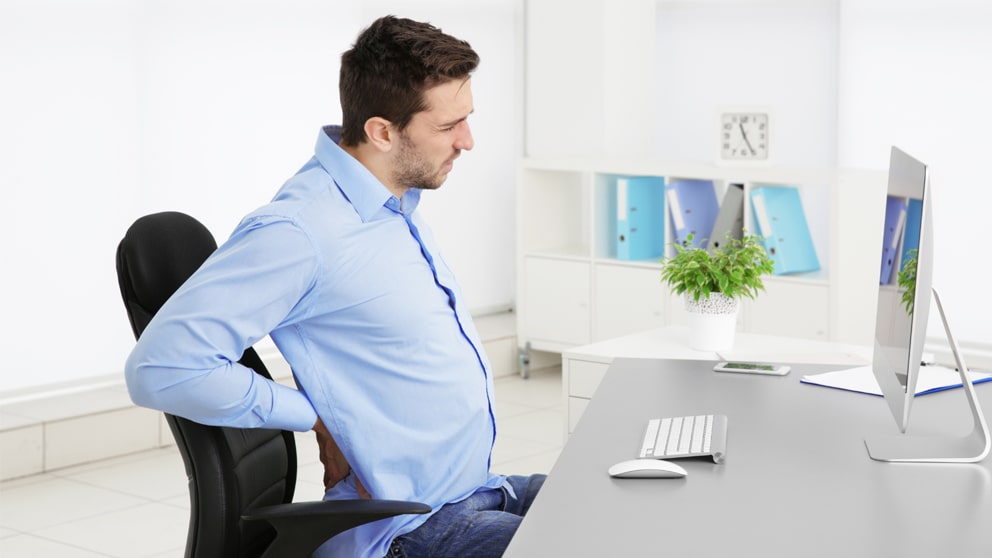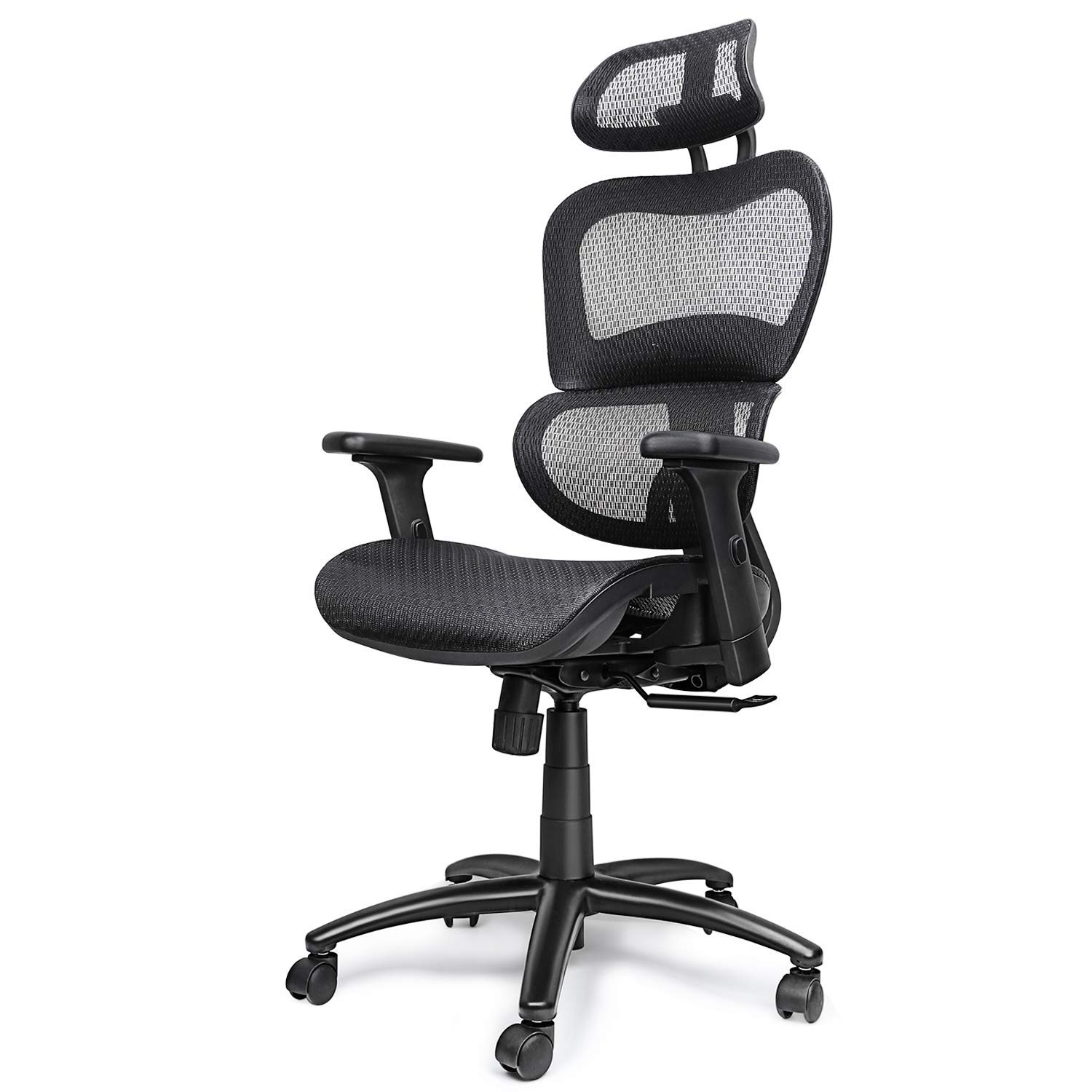Understanding Back Pain and Office Chairs

Back pain is a common ailment, and prolonged sitting in an unsuitable office chair can significantly contribute to its development. Understanding the causes of back pain related to office chairs and the ergonomic features that promote proper posture and alleviate pain is crucial for maintaining a healthy back.
Common Causes of Back Pain Related to Office Chairs
Inadequate support and improper posture while sitting for extended periods can lead to various back pain issues. The following are some of the most common causes:
- Lack of Lumbar Support: Insufficient lumbar support can lead to excessive strain on the lower back, resulting in pain and discomfort. This is because the lumbar spine naturally curves inward, and a chair without adequate lumbar support can flatten this curve, placing pressure on the discs and muscles.
- Poor Posture: Slouching or hunching over a desk can cause muscle imbalances and strain on the back, leading to pain and discomfort. Poor posture can also put pressure on the spinal discs, potentially leading to herniation.
- Incorrect Seat Height: A seat that is too high or too low can force the body into an unnatural position, leading to strain on the back, hips, and legs. The ideal seat height allows for a 90-degree angle at the knees and hips.
- Inadequate Armrest Support: Armrests that are too high or too low can cause shoulder and neck pain by forcing the arms into an unnatural position. Properly positioned armrests should support the forearms and elbows, allowing for a relaxed posture.
- Limited Adjustability: Chairs with limited adjustability can make it difficult to find a comfortable and supportive position. A chair with adjustable seat height, lumbar support, armrests, and backrest tilt allows for personalized comfort and support.
Ergonomic Features Crucial for Back Support
Ergonomic office chairs are designed to promote proper posture and reduce the risk of back pain. Key features that contribute to back support include:
- Lumbar Support: A built-in lumbar support provides a contoured curve that supports the natural inward curve of the lower back. This helps to maintain the proper spinal alignment and reduce pressure on the discs and muscles.
- Adjustable Backrest: An adjustable backrest allows users to customize the angle of the backrest to suit their individual needs and preferences. This can help to promote proper posture and reduce strain on the back muscles.
- Seat Pan Depth: The seat pan depth should be adjustable to accommodate different leg lengths. Proper seat pan depth ensures that the thighs are supported and the knees are at a 90-degree angle.
- Armrest Adjustability: Adjustable armrests allow users to customize the height and width of the armrests to provide optimal support for the elbows and forearms. This helps to reduce strain on the shoulders and neck.
- Seat Tilt: Some office chairs feature adjustable seat tilt, allowing users to recline slightly for added comfort and reduced pressure on the lower back.
How Ergonomic Features Alleviate Back Pain
Ergonomic features in office chairs are designed to promote proper posture and reduce strain on the back, minimizing the risk of back pain. Here’s how these features work:
- Lumbar Support: Provides a contoured curve that supports the natural inward curve of the lower back, reducing pressure on the discs and muscles, and promoting proper spinal alignment.
- Adjustable Backrest: Allows users to customize the angle of the backrest to suit their individual needs, promoting proper posture and reducing strain on the back muscles.
- Seat Pan Depth: Ensures proper thigh support and a 90-degree angle at the knees, preventing strain on the back, hips, and legs.
- Armrest Adjustability: Allows users to customize the height and width of the armrests, providing optimal support for the elbows and forearms, reducing strain on the shoulders and neck.
- Seat Tilt: Offers a slight recline option, providing added comfort and reducing pressure on the lower back.
Top Office Chairs for Back Pain in 2015

Best office chair for back pain 2015 – Finding the right office chair for back pain can be a daunting task, with a wide array of options available in the market. It’s crucial to consider factors such as lumbar support, adjustability, and overall comfort to ensure you find a chair that alleviates pain and promotes good posture. This section will delve into some of the top-rated office chairs for back pain in 2015, providing a comprehensive overview of their key features, pros, and cons.
Top Office Chairs for Back Pain in 2015
The following table presents a curated selection of office chairs that were highly regarded for their back support in 2015. Each chair offers unique features and benefits, catering to different needs and preferences.
| Chair Name | Key Features | Pros | Cons |
|---|---|---|---|
| Herman Miller Aeron Chair |
|
|
|
| Steelcase Leap Chair |
|
|
|
| Haworth Zody Chair |
|
|
|
| Knoll Generation Chair |
|
|
|
| Humanscale Freedom Chair |
|
|
|
Factors to Consider When Choosing an Office Chair for Back Pain: Best Office Chair For Back Pain 2015

Choosing the right office chair can significantly impact your comfort and alleviate back pain. Understanding the key factors that contribute to back pain relief is crucial for making an informed decision.
Understanding the Importance of Ergonomic Features, Best office chair for back pain 2015
Ergonomics plays a vital role in preventing and reducing back pain. An ergonomic office chair is designed to support your body’s natural curves and promote proper posture. By considering the following ergonomic features, you can choose a chair that minimizes strain on your back and improves your overall well-being.
- Adjustable Lumbar Support: This feature provides targeted support for the lower back, helping to maintain its natural curve and reduce pressure.
- Adjustable Seat Height: Adjusting the seat height ensures your thighs are parallel to the floor and your feet are flat on the ground. This helps to distribute weight evenly and prevent strain on the back.
- Adjustable Backrest: The backrest should allow you to recline slightly, promoting a more relaxed posture and reducing pressure on the spine.
- Armrests: Adjustable armrests help to support your arms and shoulders, reducing strain on your neck and upper back.
- Seat Depth: The seat depth should be adjustable to ensure that your thighs are supported and your knees are slightly bent.
The Role of Materials and Construction
The materials and construction of an office chair directly influence its durability, comfort, and breathability.
- Seat Cushion: Look for a chair with a high-density foam seat cushion that provides adequate support and comfort. Memory foam can conform to your body shape, but it may not be suitable for everyone.
- Backrest Material: The backrest should be made of breathable material like mesh or fabric to prevent sweating and discomfort.
- Base and Wheels: The base should be sturdy and the wheels should roll smoothly to allow for easy movement.
Evaluating the Chair’s Weight Capacity and Durability
Choosing a chair with a sufficient weight capacity and durable construction is essential for long-term use and back pain prevention.
- Weight Capacity: The chair’s weight capacity should exceed your weight to ensure it can handle your body weight and movement without compromising its structure.
- Durability: Look for chairs made from high-quality materials and with sturdy construction to ensure they can withstand regular use and resist wear and tear.
Considering Personal Preferences and Budget
While ergonomic features and materials are crucial, personal preferences and budget should also be taken into account.
- Personal Preferences: Consider your preferred style, color, and design.
- Budget: Set a realistic budget and prioritize the features that are most important to you.
Finding the best office chair for back pain in 2015 was a challenge, but luckily, there are tons of options now! If you’re looking for ultimate comfort, you might also want to check out the best power recliner lift chair for your living room.
A good chair, whether for work or relaxation, is essential for a healthy back.
Finding the best office chair for back pain in 2015 was a tough task, but if you’re looking for something with a little more action, maybe a swivel hunting chair is the way to go. If you’re serious about finding the best swivel hunting chair for you, check out this guide: best swivel hunting chair.
Once you’ve found your perfect hunting chair, you can go back to searching for that ideal office chair for back pain – maybe this time you’ll find one that’s both comfortable and stylish!